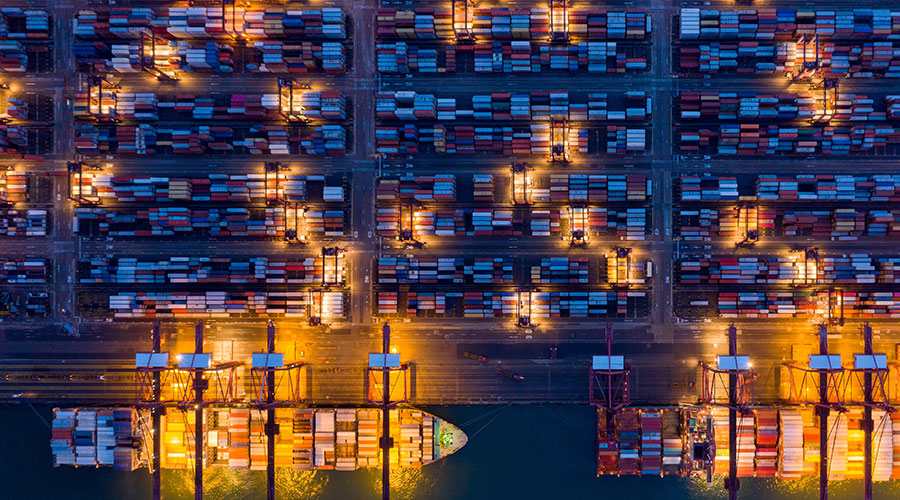

The Korea International Trade Association (KITA) works with the GSA to address ship supply practices
The Korea International Trade Association surveyed 413 shippers, shipping companies and freight forwarders about the trend of ocean freight rates next year. According to the survey results, 74.4% of respondents believe that freight rates will rise or remain at current levels: 39.8% expect freight rates to rise and 34.6% believe that freight rates will remain at current levels; Only 23.6% expect freight rates to fall.
In response to shipping companies' behavior of restricting supply by regulating shipping space, Lee In-ho, vice president of the Korea International Trade Association, said that the association plans to cooperate with international organizations such as the World Cargo Owners Association (GSA) to jointly deal with shipping companies' ship service supply regulation behavior.
The freight forwarding industry estimates the direction of container freight rates next year, although the long-term freight rates next year may be higher than this year, but the spot market freight rates will not exceed this year's level. Overall, freight rates for the whole of next year are expected to be similar to the fourth quarter of this year.
Maritime freight rates have remained high since the Houthis attacked merchant ships in November. The Shanghai Container export Freight Index (SCFI) surged from 993 points in November to a peak of 3,733 points in July, and has since fluctuated, but is still hovering around 2,384 points this month. Within a year, the index had soared almost fourfold.
Exporters and logistics operators believe that one of the reasons for the increase in maritime freight rates next year is the Houthi incident in China and East China, which has caused ships to need to circumnavigate the Cape of Good Hope, reducing the actual supply of ships and exacerbating bottlenecks. Due to the lack of supply, shipping companies have further restricted supply in order to maximize profits, such as temporary stoppage and ship repair.
In addition, if Trump's proposed tariff policy is implemented, sea freight rates may rise sharply in the short term due to rush shipments of high-tariff cargoes. History shows that SCFI spiked 62 percent in the two months after Biden announced the tariff hike last May.
Industry leaders warn that long-term high freight rates have made shippers unbearable. Lee In-ho, vice president of the Korea International Trade Association, said that cooperation with international organizations such as the World Cargo Owners Association (GSA) to jointly respond to the shipping companies' ship service supply regulation behavior is a warning, and whether the shipping alliance's joint shift reduction behavior will be regarded as monopoly behavior in the future needs to be closely watched by the industry.
In response to shipping companies' behavior of restricting supply by regulating shipping space, Lee In-ho, vice president of the Korea International Trade Association, said that the association plans to cooperate with international organizations such as the World Cargo Owners Association (GSA) to jointly deal with shipping companies' ship service supply regulation behavior.
The freight forwarding industry estimates the direction of container freight rates next year, although the long-term freight rates next year may be higher than this year, but the spot market freight rates will not exceed this year's level. Overall, freight rates for the whole of next year are expected to be similar to the fourth quarter of this year.

Maritime freight rates have remained high since the Houthis attacked merchant ships in November. The Shanghai Container export Freight Index (SCFI) surged from 993 points in November to a peak of 3,733 points in July, and has since fluctuated, but is still hovering around 2,384 points this month. Within a year, the index had soared almost fourfold.
Exporters and logistics operators believe that one of the reasons for the increase in maritime freight rates next year is the Houthi incident in China and East China, which has caused ships to need to circumnavigate the Cape of Good Hope, reducing the actual supply of ships and exacerbating bottlenecks. Due to the lack of supply, shipping companies have further restricted supply in order to maximize profits, such as temporary stoppage and ship repair.
In addition, if Trump's proposed tariff policy is implemented, sea freight rates may rise sharply in the short term due to rush shipments of high-tariff cargoes. History shows that SCFI spiked 62 percent in the two months after Biden announced the tariff hike last May.
Industry leaders warn that long-term high freight rates have made shippers unbearable. Lee In-ho, vice president of the Korea International Trade Association, said that cooperation with international organizations such as the World Cargo Owners Association (GSA) to jointly respond to the shipping companies' ship service supply regulation behavior is a warning, and whether the shipping alliance's joint shift reduction behavior will be regarded as monopoly behavior in the future needs to be closely watched by the industry.





